Dagstuhl Seminar 18271
In Situ Visualization for Computational Science
( Jul 01 – Jul 06, 2018 )
Permalink
Organizers
- Janine C. Bennett (Sandia National Labs - Albuquerque, US)
- Hank Childs (University of Oregon - Eugene, US)
- Christoph Garth (TU Kaiserslautern, DE)
- Bernd Hentschel (RWTH Aachen, DE)
Contact
- Andreas Dolzmann (for scientific matters)
- Susanne Bach-Bernhard (for administrative matters)
In situ visualization, i.e., visualizing simulation data as it is generated, is an emerging processing paradigm in response to recent trends in the development of high-performance computers. The in situ paradigm shows great promise in its ability to access increased temporal resolution and leverage extensive computational power. However, there are many open research topics that remain. For example, the paradigm is widely viewed as limiting when it comes to exploration-oriented use cases. Additionally, it will require visualization systems to become increasingly complicated and constrained in usage. The purpose of this Dagstuhl Seminar is to reflect on the current state of in situ visualization and to develop a research agenda to advance the methodology of in situ visualization.
The seminar brings together three communities (visualization researchers, high performance computing researchers, and computational science stakeholders) to initiate a structured discussion around three central and interweaving areas of research:
- In situ workflows and methodologies. In situ processing has evolved into an umbrella term to describe a family of related approaches, each of which processes data as it is generated. Recent work has identified key design choices for in situ systems that imply software engineering challenges, choice of programming model, constraints on the visualization software, and more. Unfortunately, only a small subset of these aspects has been properly explored and evidence collected for these systems is mostly anecdotal. Thus, discussion at the seminar will focus on these system engineering aspects, informed by requirements of practical applications.
- In situ data reduction and compression. Simulations have already outgrown the ability to retain the full data produced. In practice, this is typically addressed by storing an (often ad hoc defined) subset of the data or a naïvely resolution-reduced version (from which it is simply assumed will support meaningful analyses). Scientists are taking steps towards more intelligent data reduction and compression methods. These techniques omit irrelevant or redundant information, transform data to a more compact representation, or apply tailored compression algorithms, preserving sufficient data fidelity to yield meaningful flexibility in post hoc visualization. The goal of addressing this topic at the seminar is to both identify promising methodological approaches towards in situ data selection, reduction, and compression, as well as deriving measures for their effectiveness and efficiency.
- Predictive models for in situ visualization costs. Real-world use of in situ visualization in computational science centrally hinges on understanding performance implications and overall cost. Predictive models that can accurately estimate the cost of specific in situ visualization approaches are a key requirement of utmost importance. At the seminar, we aim to improve understanding of such predictive models by bringing together practitioners in computational science with in situ visualization researchers. We will discuss the central question of how to formulate such models by combining theoretical aspects of the underlying algorithms and empirical results on runtime properties of benchmark problems.
The seminar will include presentations on the state-of-the-art on these topics, as well as perspective and research talks by the participants. Based on the identification of common themes, work will continue in several break-out sessions, where smaller groups discuss specialized topics of shared interest. We highly encourage participants to propose further topics, prior to or during the seminar.
 Janine C. Bennett, Hank Childs, Christoph Garth, and Bernhard Hentschel
Janine C. Bennett, Hank Childs, Christoph Garth, and Bernhard Hentschel
The workshop identified ten challenges for in situ processing that require significant research. These challenges were identified by spending the first day of the workshop with participants giving short presentations on their experiences with in situ processing, with a special focus on unsolved problems. The participant perspectives were then organized into the ten research challenges. Over the following days, sub-groups discussed each of the ten challenges and then presented the key points of their discussions to the group and received feedback. Shortly after the workshop, the leaders of each sub-group wrote summaries for its associated research challenge; these summaries are the basis of this report.
The ten challenges identified by our participants were:
- Data quality and reduction, i.e., reducing data in situ and then exploring it post hoc, which is likely the form that will enable exploration of large data sets on future supercomputers.
- Workflow specification, i.e., how to specify the composition of different tools and applications to facilitate the in situ discovery process.
- Workflow execution, i.e., how to efficiently execute specified workflows, including workflows that are very complex.
- Exascale systems, which will have billion-way concurrency and disks that are slow relative to their ability to generate data.
- Algorithmic challenges, i.e., algorithms will need to integrate into in situ ecosystems and still perform efficiently.
- Use cases beyond exploratory analysis, i.e., ensembles for uncertainty quantification and decision optimization, computational steering, incorporation of other data sources, etc.
- Exascale data, i.e., the data produced by simulations on exascale machines will, in many cases, be fundamentally different than that of previous machines.
- Cost models, which can be used to predict performance before executing an algorithm and thus be used to optimize performance overall.
- The convergence of HPC and Big Data for visualization and analysis, i.e., how can developments in one field, such as machine learning for Big Data, be used to accelerate techniques in the other?
- Software complexity, heterogeneity, and user-facing issues, i.e., the challenges that prevent user adoption of in situ techniques because in situ software is complex, computational resources are complex, etc.
From group discussion, two other important topics emerged that do not directly lead to open research questions, but rather are concerned with effective organization of the often highly interdisciplinary research into in situ techniques. To address these, two panels were held to facilitate effective discussion. Finally, the workshop featured technical presentations by participants on recent results related to in situ visualization.
 Janine C. Bennett, Hank Childs, Christoph Garth, and Bernd Hentschel
Janine C. Bennett, Hank Childs, Christoph Garth, and Bernd Hentschel
- Andrew Bauer (Kitware - Clifton Park, US) [dblp]
- Janine C. Bennett (Sandia National Labs - Albuquerque, US) [dblp]
- E. Wes Bethel (Lawrence Berkeley National Laboratory, US) [dblp]
- Peer-Timo Bremer (LLNL - Livermore, US) [dblp]
- Thierry Carrard (CEA - Bruyères-le-Châtel, FR) [dblp]
- Hank Childs (University of Oregon - Eugene, US) [dblp]
- Matthieu Dorier (Argonne National Laboratory - Lemont, US) [dblp]
- Steffen Frey (Universität Stuttgart, DE) [dblp]
- Christoph Garth (TU Kaiserslautern, DE) [dblp]
- Nicolas R. Gauger (TU Kaiserslautern, DE) [dblp]
- Markus Hadwiger (KAUST - Thuwal, SA) [dblp]
- Charles D. Hansen (University of Utah - Salt Lake City, US) [dblp]
- Katrin Heitmann (Argonne National Laboratory, US) [dblp]
- Bernd Hentschel (RWTH Aachen, DE) [dblp]
- Ingrid Hotz (Linköping University, SE) [dblp]
- Katherine E. Isaacs (University of Arizona - Tucson, US) [dblp]
- Jens Krüger (Universität Duisburg-Essen, DE) [dblp]
- Matthew Larsen (LLNL - Livermore, US) [dblp]
- Peter Messmer (NVIDIA - Zürich, CH) [dblp]
- Kenneth Moreland (Sandia National Labs - Albuquerque, US) [dblp]
- Benson Muite (University of Tartu, EE) [dblp]
- Kenji Ono (Kyushu University, JP) [dblp]
- Manish Parashar (Rutgers University - Piscataway, US) [dblp]
- Valerio Pascucci (University of Utah - Salt Lake City, US) [dblp]
- John Patchett (Los Alamos National Laboratory, US) [dblp]
- Tom Peterka (Argonne National Laboratory, US) [dblp]
- Dirk Pleiter (Jülich Supercomputing Centre, DE) [dblp]
- David Pugmire (Oak Ridge National Laboratory, US) [dblp]
- Bruno Raffin (INRIA - Grenoble, FR) [dblp]
- Alejandro Ribes Cortes (EDF - Paris, FR) [dblp]
- Niklas Röber (DKRZ Hamburg, DE) [dblp]
- Ulrich Rüde (Universität Erlangen-Nürnberg, DE) [dblp]
- Filip Sadlo (Universität Heidelberg, DE) [dblp]
- Han-Wei Shen (Ohio State University - Columbus, US) [dblp]
- Robert Sisneros (University of Illinois at Urbana Champaign, US) [dblp]
- Madhusudhanan Srinivasan (KAUST - Thuwal, SA) [dblp]
- Gunther Weber (Lawrence Berkeley National Laboratory, US) [dblp]
- Rüdiger Westermann (TU München, DE) [dblp]
- Hongfeng Yu (University of Nebraska - Lincoln, US) [dblp]
Classification
- computer graphics / computer vision
- data structures / algorithms / complexity
- modelling / simulation
Keywords
- in situ visualization
- large-scale visualization
- scientific data analysis
- applications of visualization
- computational science

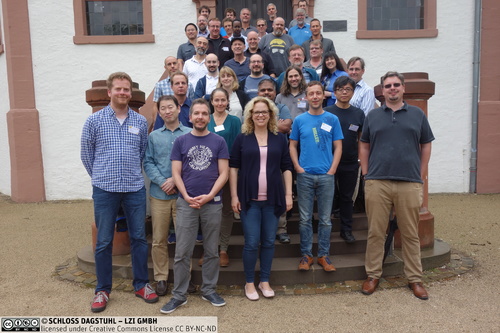
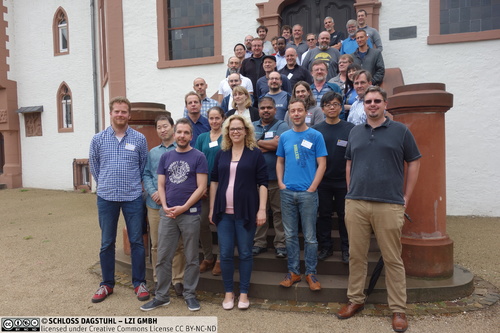
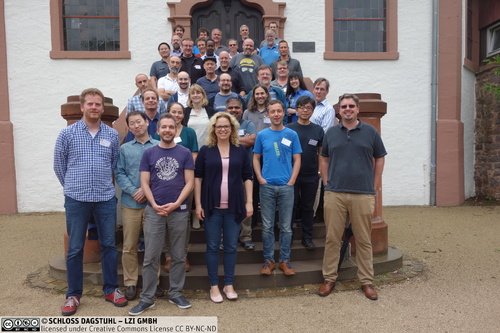
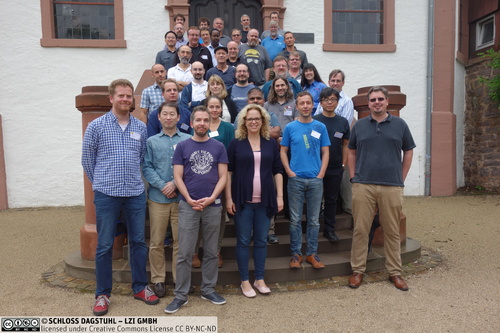
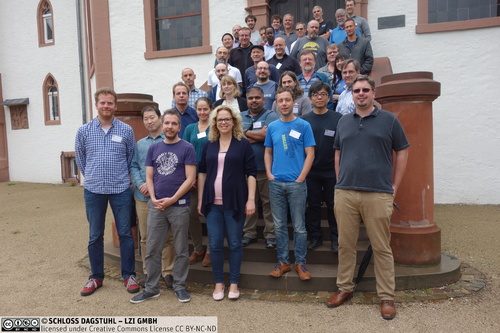
 Creative Commons BY 3.0 DE
Creative Commons BY 3.0 DE
